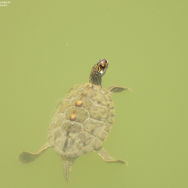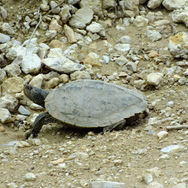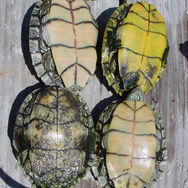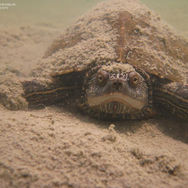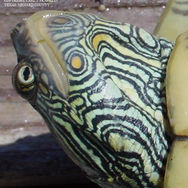
TEXAS MAP TURTLE (Graptemys versa), (STEJNEGER, 1925)
IDENTIFICATION: 2.5-8.4 inches (6.4-21.4 cm). When viewed dorsally, the carapace is oval-shaped with the widest part just above the rear legs. The posterior marginals are serrated and the carapacial scutes are convex. A medial keel is present on the vertebral scutes with the most prominent keels being located on the first three. The apex of these scutes are yellowish but often become worn down with age. The base coloration of the carapace is olive green with yellow reticulations. Juveniles and young adults often bear some slight pattern along the central seams of the plastral scutes. However, some adults have a creamy yellow plastron free of markings.
BEHAVIOR AND ECOLOGY: Texas map turtles are fond of basking and found in rivers, creeks, lakes and ponds. This species is endemic to Texas and found no where else except in the bodies of water that form the Colorado River system.
Map turtle researcher Peter Lindeman has documented the following dietary items from Texas map turtles: Freshwater sponges, algae, seeds, Asian clams, various aquatic insects, leeches, and crayfish.

